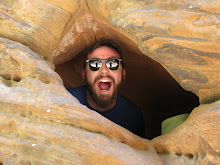The name of the quadrangle is Beverly Hills Quadrangle.
2. What are the names of the adjacent quadrangles?
The names of the adjacent quadrangles, starting from the top left corner and listing in clockwise order, Canoga Park, Van Nuys, Burbank, Topanga, Hollywood, nothing noted in bottom left corner, Venice, Inglewood.
3. When was the quadrangle first created?
The quadrangle was first created in 1966. As noted on the map as “Topography compiled 1966”.
4. What datum was used to create your map?
The datum used to create the Beverly Hills Quadrangle is the North American Datum of 1927 and later updated with the North American Datum of 1983.
5. What is the scale of the map?
The scale of the map is 1:24,000 which is fairly standard for 7.5 minute topographical maps.
6. At the above scale, answer the following:
a) 5 centimeters on the map is equivalent to how many meters on the ground?
5 centimeters on the map is equivalent to 1200 meters on the ground due to the scale of 1:24,000. 5 centimeters on the map is equivalent to 120,000 centimeters on the ground. Then by taking those centimeters and converting them to meters through the conversion of 1m = 100cm you get 120,000/100 = 1200 meters.
b) 5 inches on the map is equivalent to how many miles on the ground?
The same technique follows for this question. 5 inches on the map = 120,000 inches on the ground with consideration to the maps scale. Dividing those inches by the number of inches in a mile gives you the amount of miles on the ground. 120,000/63,360 = 1.8939 miles.
c) one mile on the ground is equivalent to how many inches on the map?
This is similar to the last two questions but instead working backward. One mile on the ground is 63,360 inches. By taking these inches and dividing the scale of the map you can get the number of inches necessary to find one mile on the ground. 63,360/24,000 = 2.64 inches of measure on the map equals one mile on the ground.
d) three kilometers on the ground is equivalent to how many centimeters on the map?
This question can be solved the same as the last. Three kilometers on the ground is equivalent to 300,000 centimeters (also on the ground). Take those centimeters and divide them by the scale of 24,000. 300,000/24,000 = 12.5 centimeters of measure on the map to equal 3 kilometers on the ground.
7. What is the contour interval on your map?
The contour interval for this map is 20 feet.
8. What are the approximate geographic coordinates in both degrees/minutes/seconds and decimal degrees of:
a) the Public Affairs Building;
34.08388ºN, 118.43749ºW
34º04’62’’N, 118º26’15’’W
b) the tip of Santa Monica pier;
34.00778ºN, 118.5ºW
34º00’28’’N, 118º30’00’’W
c) the Upper Franklin Canyon Reservoir;
34.1031ºN, 118.4231ºW
34º06’11’’N, 118º24’53’’W
9. What is the approximate elevation in both feet and meters of:
a) Greystone Mansion (in Greystone Park);
560ft or 170.68m
b) Woodlawn Cemetery;
140ft or 42.67m
c) Crestwood Hills Park;
725ft or 221m
10. What is the UTM zone of the map?
Zone 11 is the UTM zone of the map.
11. What are the UTM coordinates for the lower left corner of your map?
Zone 11, Easting 3615000, Northing 3763000
12. How many square meters are contained within each cell (square) of the UTM gridlines?
1km x 1km = 1,000,000 square meters
13. Obtain elevation measurements, from west to east along the UTM northing 3771000, where the eastings of the UTM grid intersect the northing. Create an elevation profile using these measurements in Excel (hint: create a line chart). Figure out how to label the elevation values to the two measurements on campus. Insert your elevation profile as a graphic in your blog.

14. What is the magnetic declination of the map?
The magnetic declination of this map is 14º.
15. In which direction does water flow in the intermittent stream between the 405 freeway and Stone Canyon Reservoir?
The water flows North to South.
16. Crop out (i.e., cut and paste) UCLA from the map and include it as a graphic on your blog.


No comments:
Post a Comment